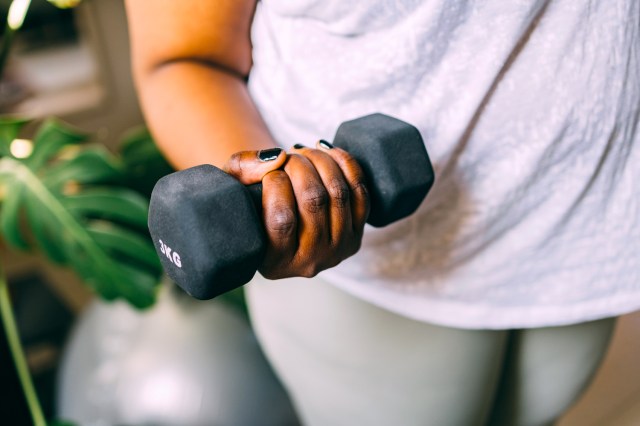Originally created nearly 200 years ago, body mass index (commonly known as BMI) has grown to become a premier indicator of health. The ratio of height-to-weight metric is widely used in medicine to estimate body fat and label people as fit, overweight, obese, or extremely obese. But critics note that the risk-of-disease measure doesn’t adequately account for body-fat percentage, bone density, or muscle mass — nor does it delineate abdominal fat from gluteofemoral fat, important factors regarding insulin resistance, metabolic disease, and cardiovascular issues. Further, ethical and racial concerns have long clouded BMI’s relevance: No women were included in the 1970s studies that brought BMI to the forefront. What’s more, these studies were not properly representative of different ethnicities, races, and backgrounds, according to a 2023 academic literature review of BMI. Making the waters even murkier, BMI was never intended for medical use — its innovator (a statistician) and modernizer (a physiologist who coined the term in the ’70s) were researchers, not medical professionals.

How Is BRI Different From BMI?
As the body roundness index (BRI) has gained traction in academia and the medical community, many have celebrated the update as a move toward more accurately assessing body health. The metric uses body shape — such as height, waist, and hip measurements, rather than simply weight — to estimate health risk. A 2024 study published in JAMA Network Open framed BRI as “an innovative concept” for use as a noninvasive screening tool for mortality risk estimation. A 2021 meta analysis published in the International Journal of Environmental Research and Public Health showed BRI as “a possible predictor and is superior to body shape index (ABSI) in predicting hypertension in adult women and men from different populations.”
But some health professionals are concerned with replacing one formula as an indicator of overall health with another. “Measurements like BRI and BMI reduce one’s health to one set of measurements as a health indicator,” says Elizabeth Wassenaar, M.S., M.D., CEDS, regional medical director for the mountain and west regions at Eating Recovery Center and Pathlight Mood & Anxiety Center. “Focusing on the size of someone’s abdomen undermines the reality that body diversity has existed throughout time and a wide variety of bodies can have health. It once again reduces the body to the idea that it needs to fit into a narrow size to have health, and I fear it will lead to the idea that we have to make this part of our body fit into a formulaic box in order to be acceptable.”

Additional Concerns With BRI
Dr. Wassenaar also notes that BRI studies have their own limitations. “BRI was only gathered and assessed in individuals aged 20 years and older, who are not pregnant,” she says of the JAMA Network Open study. “We don’t know how long after pregnancy women were reincluded in the analysis data.”
In the cases of both BMI and BRI, Dr. Wassenaar says she’s concerned that a single number is being used to pathologize the body. “The reality is our bodies are complex; they reflect so many things about who we are, who we were, and the generations before us that brought us to today. To reduce life to a single number, about a single body part, is reflective of an ongoing problem — that our current understanding and working with humans reduces them to numbers in a medical chart.”
Elisa Kosonen, a registered holistic nutritionist and certified health coach, also finds BRI to be overly simplistic. “When we talk about markers of health, what we call them matters,” she says. “Names like these can shape public perception and drive stigma, so using the term ‘roundness’ is not a step in the right direction. BRI still fundamentally tries to simplify a highly complex picture.”
All you have to do is look at your friends and family to know body composition is unique to each individual. “Reducing someone’s health to a single physical measurement will always miss essential aspects of their well-being,” Kosonen continues. “Visceral fat on the abdomen is just one piece of the puzzle when it comes to disease risk.”

What Health Markers Are Better Than BMI and BRI?
Dr. Wassenaar looks to other ways of marking physical health and more accurately indicating body fitness and/or health risks. For example, research has shown handgrip strength as an evidence-based way to measure muscle mass and strength. “I think there may be ways we can measure how our bodies are functioning that are easy, reproducible, and can measure change over time,” she says. “I'd like to see using markers that reflect how our bodies work and how we can remain functional to the best of each of our abilities, taking into account how bodies are diverse across cultures, lived experiences, and current stressors.”
Rather than focusing on a singular metric, such as BMI or BRI, Kosonen advocates for a more comprehensive framework, “including testing that goes beyond body measurements, such as blood pressure, blood glucose, lipid profiles, inflammatory markers, hormone panels, and nutrient deficiencies,” she says. Dr. Wassenaar suggests patients work with a health care provider to set individual goals, such as walking around the block or building flexibility to get up off the ground from sitting — both of which can reflect long-term health goals such as cardiovascular health, flexibility, and balance, she says.
To that end, both health providers suggest patients request more comprehensive assessments and testing, and a more integrative approach rather than a reliance on one metric to provide a picture of health.
“I'd encourage [patients] to ask their physician to think with them about things they can monitor together that meet their actual health goals and aren't based on the idea that dieting or decreasing body size will meet their health goals,” Dr. Wassenaar says. “Healthy movement, flexibility, balanced eating, regular sleep, engaging in community, hygiene, and reducing intake of alcohol or nicotine are all interventions that will improve overall health and are not based on the idea that you have to change the size of your body to achieve health.”
This article is for general informational purposes only.
Affiliate Disclaimer Medical Disclaimer












 Unique Beauty is free for all users.
Unique Beauty is free for all users.